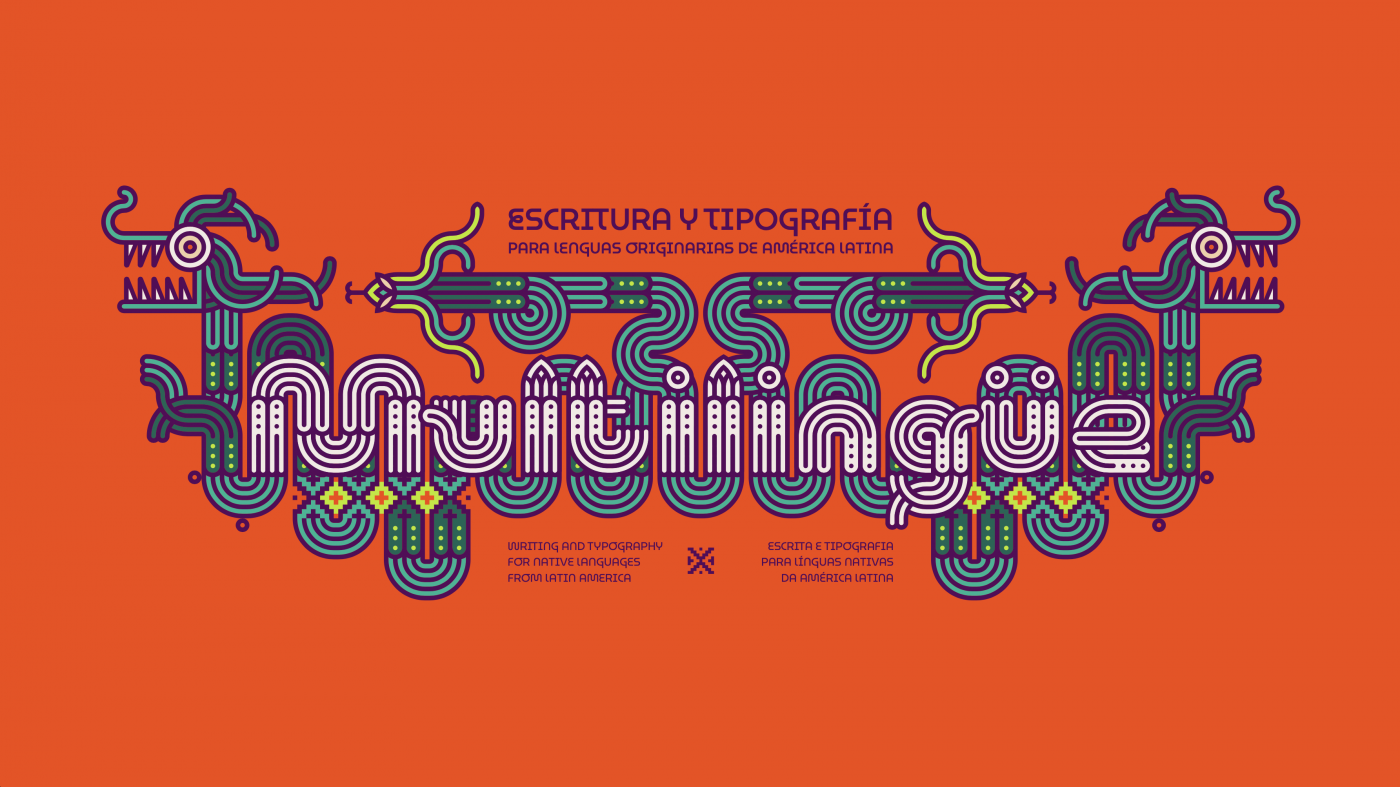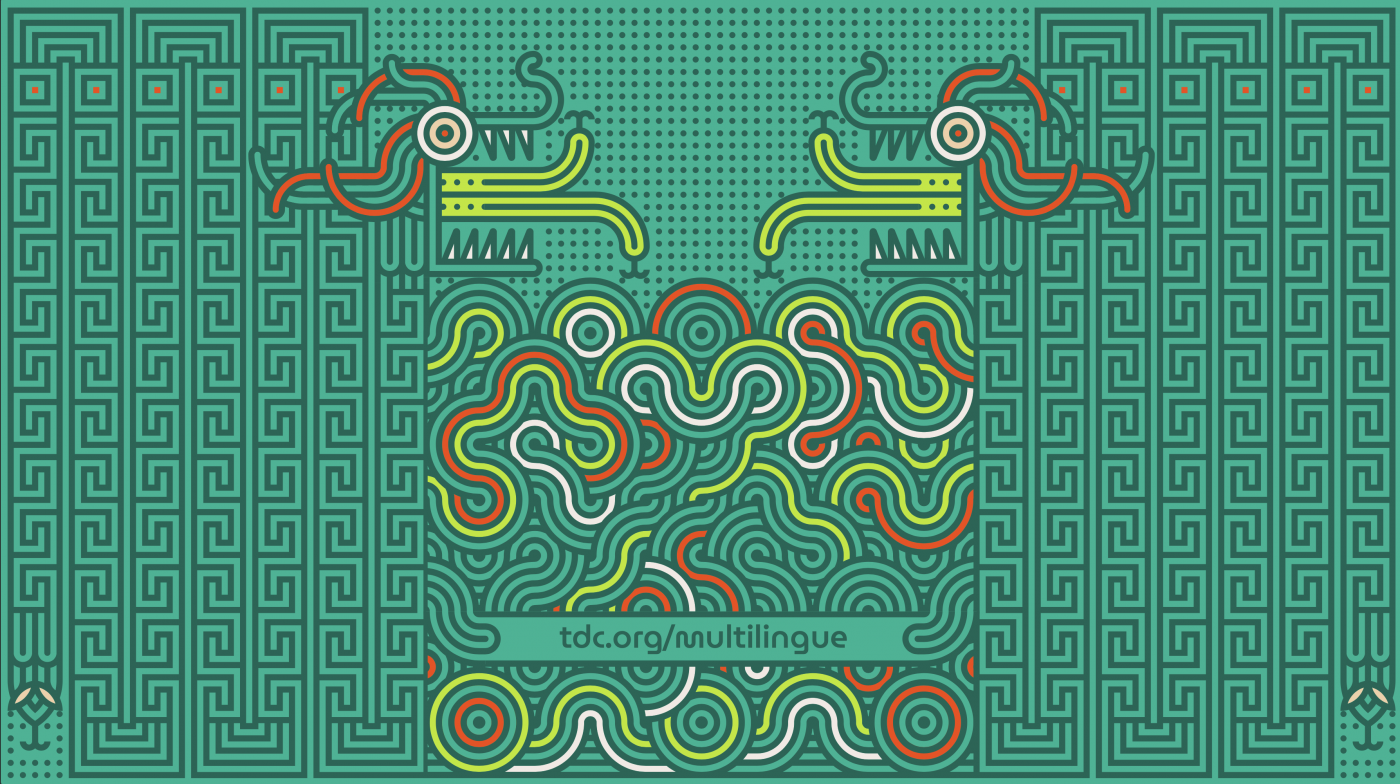Multilingüe, the latest installment in the Type Directors Club’s Type Drives Culture conference series, is just about here! Join us virtually on November 9–11 for three days of incredible speakers, all tackling the challenges and opportunities in the field of typeface design for the indigenous languages of what we call Latin America. While the Latin script is a common foundation, the demand for specialized characters to faithfully represent unique sounds and linguistic intricacies is an urgent concern, and our guest experts illuminate the unwavering efforts to overcome these obstacles.
Ahead of the conference, TDC Advisory Board Member Trisha Tan chatted with Multilingüe key organizers Sandra García and Manuel López Rocha.
The list of Multilingüe speakers is incredible! How do you hope this conference will help to promote dialogue and understanding between native speakers, researchers, designers, and typographers?
Sandra: When we started our hunt for a list of speakers, our primary objective was to foster connections among individuals involved in designing and developing fonts and tools for the preservation of native languages. With this goal in mind, we’ve made an effort to showcase successful cases that highlight the positive outcomes of this collaboration. In doing so, we aim to demonstrate to the broader public how the interaction between professionals and the community can enrich and enhance solutions related to typographic challenges.
In essence, Multilingüe was conceived with the explicit intention of promoting collaboration among all stakeholders, consistently encouraging the creation of typefaces for indigenous languages from a multidisciplinary perspective. It is our fervent belief that by working together, we can make significant strides in this critical field.
Can you tell us a little about some of the challenges and opportunities that will be discussed in Multilingüe on designing typefaces for native languages?
Manuel: Many indigenous American languages have been using the Latin script for decades, if not centuries. However, their phonetics and structures differ significantly from European languages. This necessitates the use of Latin characters to represent distinct sounds, often involving diacritics, superscripts, and other glyphs to denote aspects such as duration, tone, and other linguistic features. Unfortunately, unlike many European languages, not many typefaces include the characters necessary for accurately representing these languages.
Dedicated individuals, including designers, activists, linguists, and publishers, have been tirelessly working for years in a race against time, technology limitations, and the legacy of colonialism. Their mission is to create fonts and other essential tools that enhance writing accessibility in native languages. In this forum, we will engage in a comprehensive discussion of these critical issues and the ongoing efforts to overcome them.

How does Multilingüe intend to inspire discussion of the use of typography and design to help preserve the rich linguistic diversity of the hemisphere?
Sandra: Every indigenous language in the Americas, spanning from Alaska to Chile, faces some level of endangerment. To ensure the continued vitality and relevance of a language, it must be woven into the fabric of everyday life, encompassing activities such as writing, reading, and publishing. This is why it’s crucial to address these pressing issues.
Multilingüe takes on the mission of showcasing successful examples in the use, development, and promotion of design for and with native languages. Through these examples, we aim to demonstrate the feasibility, though not without its challenges and hurdles, of creating typography and promotional materials in the original languages. In every respect, Multilingüe serves as a reflection of the current state of these languages, shedding light on the unwavering efforts undertaken by dedicated individuals committed to these vital initiatives.
What are some of the cultural considerations that you have taken into account in planning the conference to ensure diversity of opinions and inclusivity of the many different native languages?
Manuel: One of our most significant challenges has been crafting a global event with a distinct local essence. Regarding inclusivity, our foremost objective is to ensure that every speaker can express themselves as freely as possible in English, Spanish, or Portuguese, facilitating clear and unhindered communication of their ideas. International events that actively promote linguistic inclusion are a rarity. Still, we firmly believe that Multilingüe provides an ideal platform to share stories from the community’s perspective and the experiential insights of individuals deeply engaged in the preservation and nurturing of language.
Throughout the conference, we proudly offer simultaneous translation services for other languages. Furthermore, we have made it a priority to invite individuals from indigenous communities to share their first-hand experiences in working with their native languages. They will provide invaluable insights into the challenges they’ve faced and the needs that have driven the development of specific typographic projects. In parallel, we have engaged typography professionals who approach this endeavor from the periphery, aiming to comprehend the technical nuances of font development for native languages.
All of these considerations aim to foster a harmonious and inclusive community of individuals who will guide us in understanding the complexities surrounding native languages. We hope this conference can stimulate broader interest in these vital topics and cultivate fresh synergies among communities, researchers, and other stakeholders in this collective journey.

As typographic experts from your part of the continent, what are some of the ethical considerations involved in designing typefaces for native languages?
Sandra: As we delve into these critical subjects, we bear a substantial responsibility to the communities and languages we aim to support. Our mission is clear: we must create high-quality products and typography to turn the aspiration of facilitating writing in native languages into a tangible reality. It is imperative that our reading materials are meticulously designed and our typefaces are genuinely effective in enhancing both the writing and reading experience.
Failing to provide well-crafted materials and functional typefaces could inadvertently undermine the efforts put into writing and publishing in native languages. Suppose the process of writing and reading remains considerably more arduous in native languages than it is in colonial languages. In that case, we risk discouraging their use and, ultimately, contributing to the endangerment and potential disappearance of these languages.
With our collective dedication, we are committed to ensuring that writing and reading in native languages become not just accessible but also an enriching and engaging experience. Our responsibility is to empower these languages, strengthening their position and vitality within the cultural tapestry of our world.
How can thought leaders, researchers, designers, and typographers ensure that the voices of native speakers are heard and respected in the design process?
Manuel: As designers, we must acknowledge that we cannot possibly possess all-encompassing knowledge or master every language. However, we are entrusted with the responsibility of leveraging our expertise and know-how to address specific typographic writing challenges. It’s essential to recognize that speakers, educators, writers, and publishers hold a deep understanding of their languages and cultures. They come to us with a multitude of ideas and needs, which we must genuinely listen to and address.
Sandra: Our primary objective is to solve the problems they present, making typographic tools more accessible for speakers. Our focus should never be to merely satisfy our own comfort or showcase our design prowess. We are not here to create new scripts, alter languages, or single-handedly rescue communities. Instead, we are here to play a vital role in a broader collective effort.
By collaborating with all stakeholders, our role in this endeavor becomes clear: to help solve tangible problems as integral components of a larger machine, working together to foster the vitality and accessibility of native languages.